Animal models of nervous system diseases are mainly used to study the pathogenesis, pathological process and treatment methods of diseases. Common disease animal models include cerebrovascular disease model, Alzheimer's disease, Parkinson's disease, epilepsy, spinal cord injury, etc.
Alzheimer's disease model
Alzheimer's disease model induced by transgenic mice
Parkinson's model
Establishment of mouse Parkinson's model by intraperitoneal injection of MPTP
Epilepsy model
Rat temporal lobe epilepsy model induced by injection of 4-aminopyridine mixture
PTZ-induced chronic epilepsy model in rats
Establishment of rat model of global cerebral ischemic epilepsy by transient closure of bilateral common carotid arteries
Mild hepatic encephalopathy model
Rat model of mild hepatic encephalopathy induced by intragastric administration of carbon tetrachloride (CCl4)
Migraine model
Establishment of migraine model in rats by intraperitoneal injection of nitroglycerin
Spinal cord injury model
Establishment of rat spinal cord injury model by Allen's method
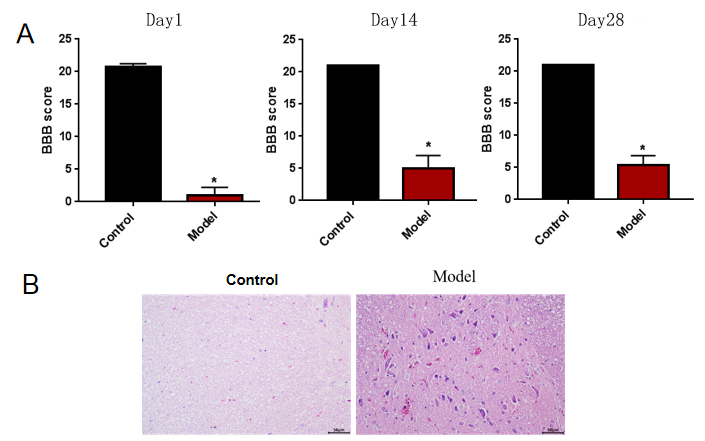
Fig. 1 Rat spinal cord injury model. A BBB score. B HE staining of spinal cord tissue showed that in the spinal cord injury group, tissue hemorrhage, loose edema, cell vacuolar degeneration, partial cell nucleus pyknosis, nerve fiber dissolution and disappearance.
Middle cerebral artery ischemia reperfusion model
Establishment of middle cerebral artery ischemia-reperfusion model in rats/mice by clamping ischemia and reperfusion of cerebral aorta

Fig. 2 Middle cerebral artery ischemia reperfusion model. TTC staining.
Sciatic nerve compression model
Establishment of rat sciatic nerve compression model by ligation of common sciatic nerve
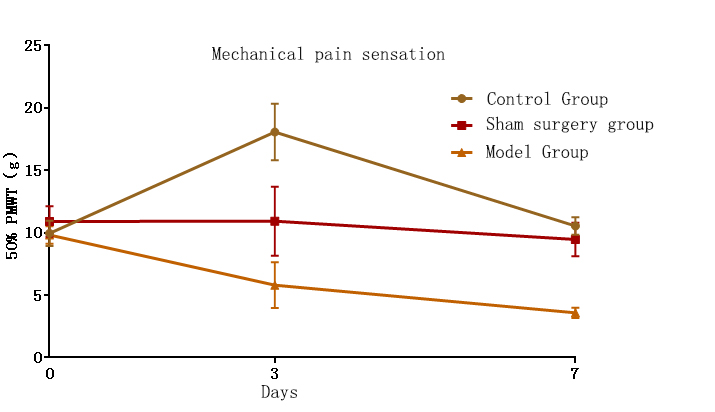 Fig. 3 Model of sciatic nerve compression. The experimental threshold of mechanical pricking pain on the operating side of the foot of the model rats decreased significantly.
Unilateral labyrinthectomy model
Establishment of unilateral labyrinthectomy model in rats with vestibular injury
Brain injury model of sepsis
Establishment of sepsis brain injury model in rats by LPS combined with cecal ligation and perforation
Trigeminal neuralgia model
Fig. 3 Model of sciatic nerve compression. The experimental threshold of mechanical pricking pain on the operating side of the foot of the model rats decreased significantly.
Unilateral labyrinthectomy model
Establishment of unilateral labyrinthectomy model in rats with vestibular injury
Brain injury model of sepsis
Establishment of sepsis brain injury model in rats by LPS combined with cecal ligation and perforation
Trigeminal neuralgia model
Establishment of rat trigeminal neuralgia model by chronic constriction of infraorbital nerve
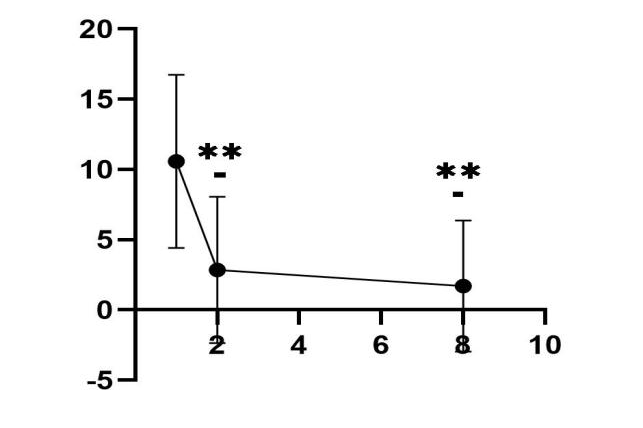
Fig. 4 Trigeminal neuralgia model. Change of mechanical prick threshold.
Autoimmune encephalomyelitis model
Rat model of autoimmune encephalomyelitis induced by MBP68-86 injection
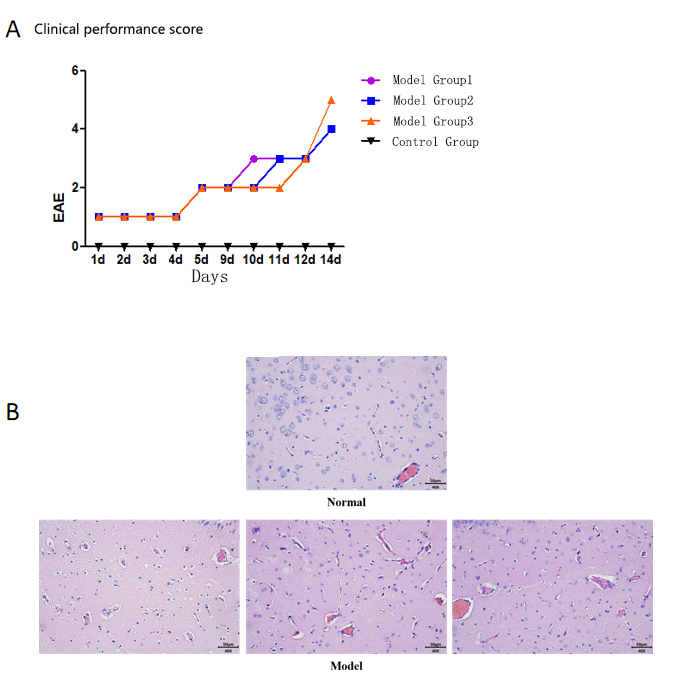 Fig. 5 Model of autoimmune encephalomyelitis. A Behavior ability score. B Compared with the normal group, the model group can see small blood vessel hyperemia, neuron degeneration is more obvious, the cell body is enlarged, the shape is round, the nucleus is offset, and the nucleolus disappears
Postoperative delirium model in aged rats
Postoperative delirium model induced by surgical modeling in aged rats
Cerebral venous sinus thrombosis model
Fig. 5 Model of autoimmune encephalomyelitis. A Behavior ability score. B Compared with the normal group, the model group can see small blood vessel hyperemia, neuron degeneration is more obvious, the cell body is enlarged, the shape is round, the nucleus is offset, and the nucleolus disappears
Postoperative delirium model in aged rats
Postoperative delirium model induced by surgical modeling in aged rats
Cerebral venous sinus thrombosis model
Cerebral venous sinus thrombosis model induced by local administration of ferric chloride in rats
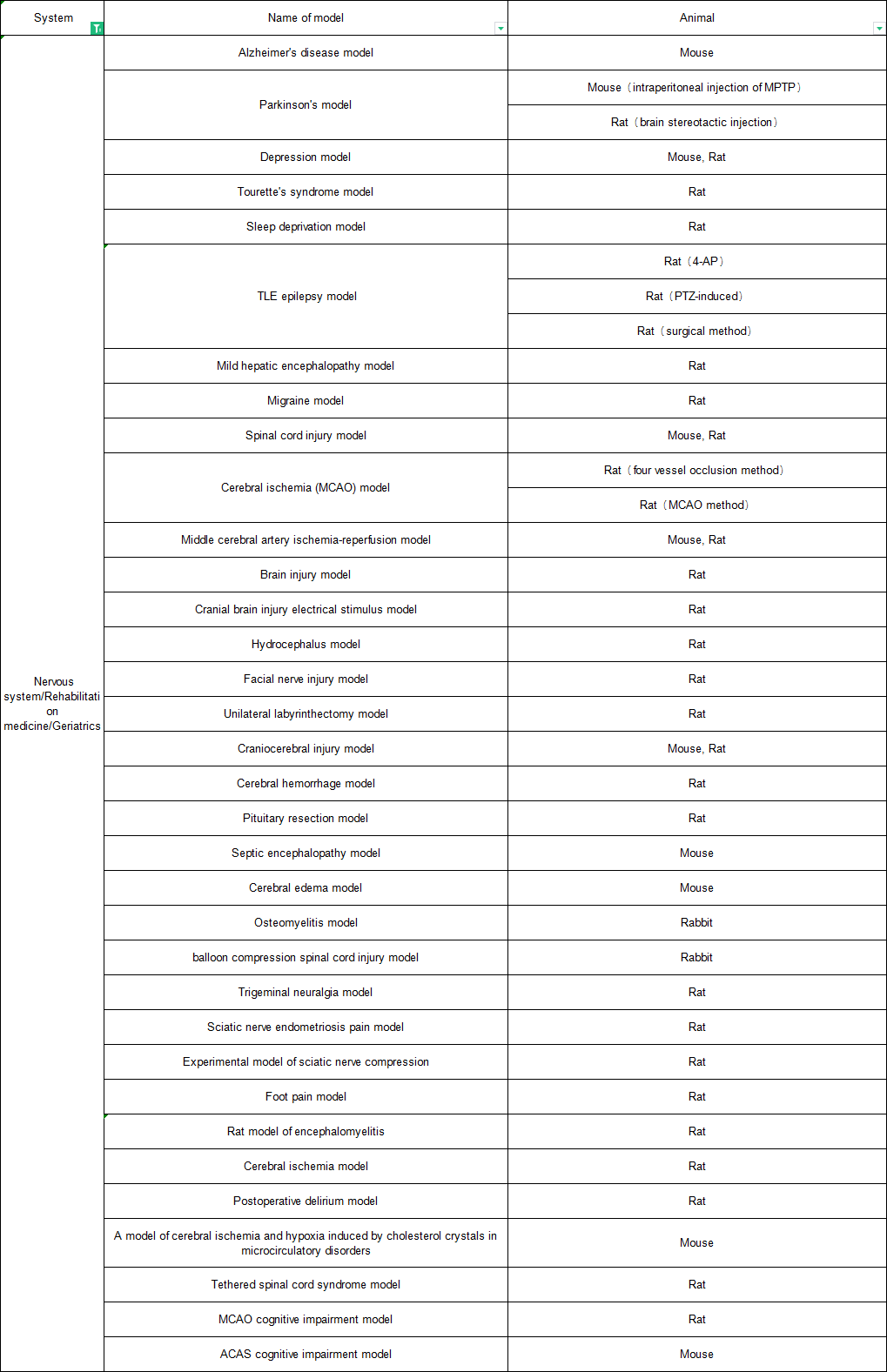



 Fig. 3 Model of sciatic nerve compression. The experimental threshold of mechanical pricking pain on the operating side of the foot of the model rats decreased significantly.
Fig. 3 Model of sciatic nerve compression. The experimental threshold of mechanical pricking pain on the operating side of the foot of the model rats decreased significantly.
 Fig. 5 Model of autoimmune encephalomyelitis. A Behavior ability score. B Compared with the normal group, the model group can see small blood vessel hyperemia, neuron degeneration is more obvious, the cell body is enlarged, the shape is round, the nucleus is offset, and the nucleolus disappears
Fig. 5 Model of autoimmune encephalomyelitis. A Behavior ability score. B Compared with the normal group, the model group can see small blood vessel hyperemia, neuron degeneration is more obvious, the cell body is enlarged, the shape is round, the nucleus is offset, and the nucleolus disappears